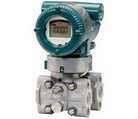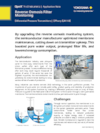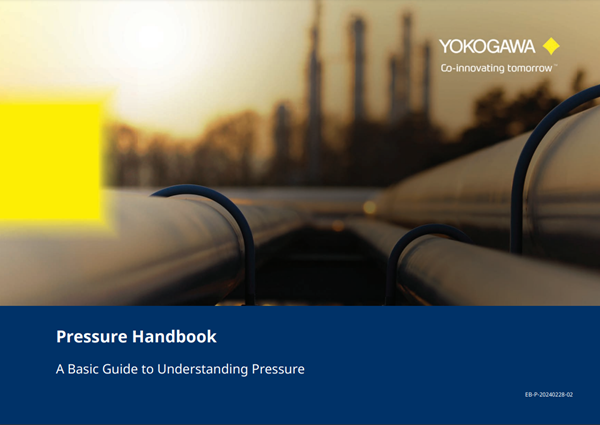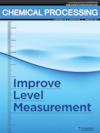What is a Differential Pressure Gauge?
Differential pressure transmitters monitor and communicate the pressure measurements of equipment. Featuring DPharp technology, they deliver accurate, repeatable, and fast-responding measurements. Traditional mount or remote diaphragm seal mount configurations are available.
How Does a Differential Pressure Transmitter Work?
Differential Pressure (DP) transmitters measure the difference between two pressures. They use a reference point called the low-side pressure and compare it to the high-side pressure. Ports in the instrument are marked high-side and low-side. The DP level transmitter reading can be either negative or positive depending on whether the low-side or high-side is the larger value. A DP transmitter can be used as a gauge pressure transmitter if the low-side is left open to the atmosphere.
Digital Differential Pressure Transmitter
As part of a digital transformation, digital differential pressure transmitters can make data-gathering operations more efficient and safe for people.
Common Industrial Applications
- Closed Tank Level
- DP Flow (Secondary Element)
- Filter health
- Density
What are the Different Types of Pressure Measurement?
-
EJA110E
High-Performance Differential Pressure Transmitter
-
EJX110A
High-Performance Differential Pressure Transmitter
-
EJA130E
Differential Pressure Transmitter
-
EJX130A
High Static Differential Pressure Transmitter
-
EJXC80A, EJAC80E (Differential / Gauge Pressure Diaphragm Seal)
Differential / Gauge Pressure Diaphragm Seal System with one or two Diaphragm Seals
-
EJXC80A, EJAC80E (Differential Pressure Direct Mounted Seal)
Differential Pressure Direct Mounted Seal
-
EJA120E
Draft Range Differential Pressure Transmitter
-
EJX120A
Traditional-Mount Draft Range Pressure Transmitter
-
EJXC40A (DRS)
Digital Remote Sensor (DRS) Transmitter
Details
Which DP Level Transmitter Series Is Right for You?
 |
 |
||
| EJA-E Series | EJX-A Series | ||
|---|---|---|---|
| Accuracy | |||
| ± 0.025% | • | ||
| ± 0.040% | • | • | |
| ± 0.055% | • | ||
| Stability | |||
| ± 0.1% of URL per 15 years | • | ||
| ± 0.1% of URL per 10 years | • | ||
| Response Time | |||
| 90 msec | • | • | |
| Safety | |||
| FMEDA Report | • | • | |
| IEC 61508 Certified (SIL 2) | • | • | |
| Multi-sensing | |||
| Differential Pressure | • | • | |
| Static Pressure | • | • | |
How Does a Differential Pressure Transmitter Work?
Differential Pressure (DP) transmitters measure the difference between two pressures. They use a reference point called the low-side pressure and compare it to the high-side pressure. Ports in the instrument are marked high-side and low-side. The DP reading can be either negative or positive depending on whether the low-side or high-side is the larger value. A DP transmitter can be used as a gauge pressure transmitter if the low-side is left open to the atmosphere.
Resources
The Semiconductor industry uses ultrapure water to rinse away contaminants from the silicon wafers after each layer of the fabrication process. To ensure effective rinsing after each step could require thousands of gallons of water. If the water has even the slightest impurities, the semiconductors can potentially be contaminated, leading to scrap waste and loss of weeks of production. Many industries use reverse osmosis (RO) technology in the water purification process. The importance of pure water can include public safety, product quality, and reliability of production equipment. An RO system functions by creating a differential pressure across an array of filters. Pressure is applied to the feed water side of the system to force water through a semi-permeable membrane. The membrane blocks contaminants to allow permeate water to pass through.
Accurate reactor level measurement enables flow optimization to enhance yield.
Download this eBook and learn:
- The basic physics of pressure
- Different types of pressure sensors
- Features of pressure transmitters
- Pressure transmitters communications standards
- Key characteristics of pressure
- Common types of diaphragm seals
Read this eBook to learn how to best leverage the latest measurement instrumentation to avoid incidents and improve productivity. You will also find valuable information about overcoming common CIP challenges and stories of success.
Smart devices, like Yokogawa’s line of Total Insight transmitters and flowmeters contribute to Digital Transformation during operations and throughout the lifecycle of the instrument.
When selecting a Level Measurement device, what to consider in order to be accurate and repeatable?
Get the most from what exists currently and take advantage of new methods. Appeared in the March 2021 issue of an ISA.org publication.
Downloads
Videos
Podcast: The benefits of a tried-and-true pressure-based level measurement technology.
Is it true that 4-20 mA HART will be phased out in the near future? Is a transducer equal to a transmitter? Tune in to hear the debunking of these myths.
Looking for more information on our people, technology and solutions?
Contact Us









